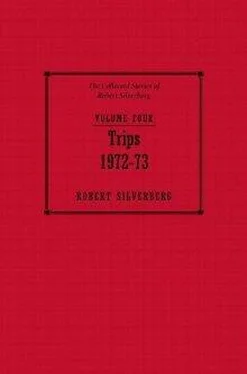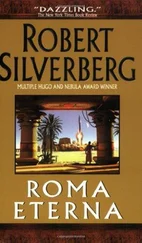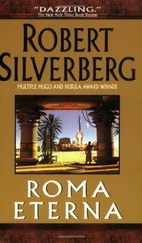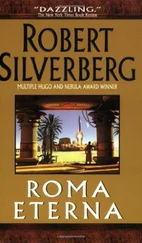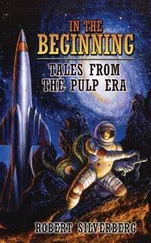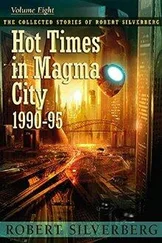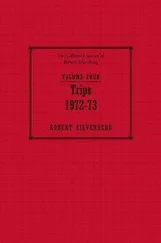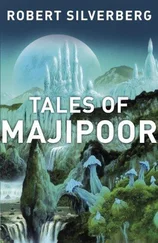Robert Silverberg - Born with the Dead
Здесь есть возможность читать онлайн «Robert Silverberg - Born with the Dead» весь текст электронной книги совершенно бесплатно (целиком полную версию без сокращений). В некоторых случаях можно слушать аудио, скачать через торрент в формате fb2 и присутствует краткое содержание. Год выпуска: 2009, ISBN: 2009, Издательство: Subterranean Press, Жанр: Фантастика и фэнтези, на английском языке. Описание произведения, (предисловие) а так же отзывы посетителей доступны на портале библиотеки ЛибКат.
- Название:Born with the Dead
- Автор:
- Издательство:Subterranean Press
- Жанр:
- Год:2009
- ISBN:978-1-59606-212-2
- Рейтинг книги:5 / 5. Голосов: 1
-
Избранное:Добавить в избранное
- Отзывы:
-
Ваша оценка:
- 100
- 1
- 2
- 3
- 4
- 5
Born with the Dead: краткое содержание, описание и аннотация
Предлагаем к чтению аннотацию, описание, краткое содержание или предисловие (зависит от того, что написал сам автор книги «Born with the Dead»). Если вы не нашли необходимую информацию о книге — напишите в комментариях, мы постараемся отыскать её.
Born with the Dead — читать онлайн бесплатно полную книгу (весь текст) целиком
Ниже представлен текст книги, разбитый по страницам. Система сохранения места последней прочитанной страницы, позволяет с удобством читать онлайн бесплатно книгу «Born with the Dead», без необходимости каждый раз заново искать на чём Вы остановились. Поставьте закладку, и сможете в любой момент перейти на страницу, на которой закончили чтение.
Интервал:
Закладка:
“—once covered four square miles. A grand ceremonial center, the Hopewellian equivalent of Chichén Itzá, of Luxor, of—” He pauses. Awareness of her distress has finally filtered through the intensity of his archeological zeal. “How are you doing?” he asks gently.
She smiles a brave smile. Moistens her lips. Inclines her head toward the golfers, toward the tourists, toward the row of darling little houses outside the rim of the park. Shudders.
“Too cheery for you, is it?”
“Much,” she says.
Cheery. Yes. A cheery little town, a magazine-cover town, a chamber-of-commerce town. Newark lies becalmed on the breast of the sea of time: but for the look of the automobiles, this could be 1980 or 1960 or perhaps 1940. Yes. Motherhood, baseball, apple pie, church every Sunday. Yes. Zacharias nods and makes one of the signs of comfort at her. “Come,” he whispers. “Let’s go toward the heart of the complex. We’ll lose the twentieth century along the way.”
With brutal imperial strides he plunges into the golf course. Long-legged Sybille must work hard to keep up with him. In a moment they are within the embankment, they have entered the sacred octagon, they have penetrated the vault of the past, and at once Sybille feels they have achieved a successful crossing of the interface between life and death. How still it is here! She senses the powerful presence of the forces of death, and those dark spirits heal her unease. The encroachments of the world of the living on these precincts of the dead become insignificant: the houses outside the park are no longer in view, the golfers are mere foolish incorporeal shadows, the bustling yellow golf carts become beetles, the wandering tourists are invisible.
She is overwhelmed by the size and symmetry of the ancient site. What spirits sleep here? Zacharias conjures them, waving his hands like a magician. She has heard so much from him already about these people, these Hopewellians—What did they call themselves? How can we ever know?—who heaped up these ramparts of earth twenty centuries ago. Now he brings them to life for her with gestures and low urgent words. He whispers fiercely:
—Do you see them?
And she does see them. Mists descend. The mounds reawaken; the mound-builders appear. Tall, slender, swarthy, nearly naked, clad in shining copper breastplates, in necklaces of flint disks, in bangles of bone and mica and tortoise shell, in heavy chains of bright lumpy pearls, in rings of stone and terra cotta, in armlets of bears’ teeth and panthers’ teeth, in spool-shaped metal ear-ornaments, in furry loincloths. Here are priests in intricately woven robes and awesome masks. Here are chieftains with crowns of copper rods, moving in frosty dignity along the long earthen-walled avenue. The eyes of these people glow with energy. What an enormously vital, enormously profligate culture they sustain here! Yet Sybille is not alienated by their throbbing vigor, for it is the vigor of the dead, the vitality of the vanished.
Look, now. Their painted faces, their unblinking gazes. This is a funeral procession. The Indians have come to these intricate geometrical enclosures to perform their acts of worship, and now, solemnly parading along the perimeters of the circle and the octagon, they pass onward, toward the mortuary zone beyond. Zacharias and Sybille are left alone in the middle of the field. He murmurs to her:
—Come. We’ll follow them.
He makes it real for her. Through his cunning craft she has access to this community of the dead. How easily she has drifted backward across time! She learns here that she can affix herself to the sealed past at any point; it’s only the present, open-ended and unpredictable, that is troublesome. She and Zacharias float through the misty meadow, no sensation of feet touching ground; leaving the octagon, they travel now down a long grassy causeway to the place of the burial mounds, at the edge of a dark forest of wide-crowned oaks. They enter a vast clearing. In the center the ground has been plastered with clay, then covered lightly with sand and fine gravel; on this base the mortuary house, a roofless four-sided structure with walls consisting of rows of wooden palisades, has been erected. Within this is a low clay platform topped by a rectangular tomb of log cribbing, in which two bodies can be seen: a young man, a young woman, side by side, bodies fully extended, beautiful even in death. They wear copper breastplates, copper ear ornaments, copper bracelets, necklaces of gleaming yellowish bears’ teeth.
Four priests station themselves at the corners of the mortuary house. Their faces are covered by grotesque wooden masks topped by great antlers, and they carry wands two feet long, effigies of the death-cup mushroom in wood sheathed with copper. One priest commences a harsh, percussive chant. All four lift their wands and abruptly bring them down. It is a signal; the depositing of grave-goods begins. Lines of mourners owed under heavy sacks approach the mortuary house. They are unweeping, even joyful, faces ecstatic, eyes shining, for these people know what later cultures will forget, that death is no termination but rather a natural continuation of life. Their departed friends are to be envied. They are honored with lavish gifts, so that they may live like royalty in the next world: out of the sacks come nuggets of copper, meteoric iron, and silver, thousands of pearls, shell beads, beads of copper and iron, buttons of wood and stone, heaps of metal ear-spools, chunks and chips of obsidian, animal effigies carved from slate and bone and tortoise shell, ceremonial copper axes and knives, scrolls cut from mica, human jawbones inlaid with turquoise, dark coarse pottery, needles of bone, sheets of woven cloth, coiled serpents fashioned from dark stone, a torrent of offerings, heaped up around and even upon the two bodies.
At length the tomb is choked with gifts. Again there is a signal from the priests. They elevate their wands and the mourners, drawing back to the borders of the clearing, form a circle and begin to sing a somber, throbbing funeral hymn. Zacharias, after a moment, sings with them, wordlessly embellishing the melody with heavy melismas. His voice is a rich basso cantante, so unexpectedly beautiful that Sybille is moved almost to confusion by it, and looks at him in awe. Abruptly he breaks off, turns to her, touches her arm, leans down to say:
—You sing too.
Sybille nods hesitantly. She joins the song, falteringly at first, her throat constricted by self-consciousness; then she finds herself becoming part of the rite, somehow, and her tone becomes more confident. Her high clear soprano soars brilliantly above the other voices.
Now another kind of offering is made: boys cover the mortuary house with heaps of kindling—twigs, dead branches, thick boughs, all sorts of combustible debris—until it is quite hidden from sight, and the priests cry a halt. Then, from the forest, comes a woman bearing a blazing firebrand, a girl, actually, entirely naked, her sleek fair-skinned body painted with bizarre horizontal stripes of red and green on and buttocks and thighs, her long glossy black hair flowing like a cape behind her as she runs. Up to the mortuary house she sprints; breathlessly she touches the firebrand to the kindling, here, here, here, performing a wild dance as she goes, and hurls the torch into the center of the pyre. Skyward leap the flames in a ferocious rush. Sybille feels seared by the blast of heat. Swiftly the house and tomb are consumed.
While the embers still glow, the bringing of earth gets under way. Except for the priests, who remain rigid at the cardinal points of the site, and the girl who wielded the torch, who lies like discarded clothing at the edge of the clearing, the whole community takes part. There is an open pit behind a screen of nearby trees; the worshipers, forming lines, go to it and scoop up soil, carrying it to the burned mortuary house in baskets, in buckskin aprons, in big moist clods held in their bare hands. Silently they dump their burdens on the ashes and go back for more.
Читать дальшеИнтервал:
Закладка:
Похожие книги на «Born with the Dead»
Представляем Вашему вниманию похожие книги на «Born with the Dead» списком для выбора. Мы отобрали схожую по названию и смыслу литературу в надежде предоставить читателям больше вариантов отыскать новые, интересные, ещё непрочитанные произведения.
Обсуждение, отзывы о книге «Born with the Dead» и просто собственные мнения читателей. Оставьте ваши комментарии, напишите, что Вы думаете о произведении, его смысле или главных героях. Укажите что конкретно понравилось, а что нет, и почему Вы так считаете.
